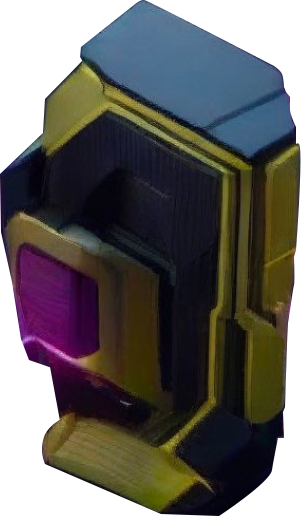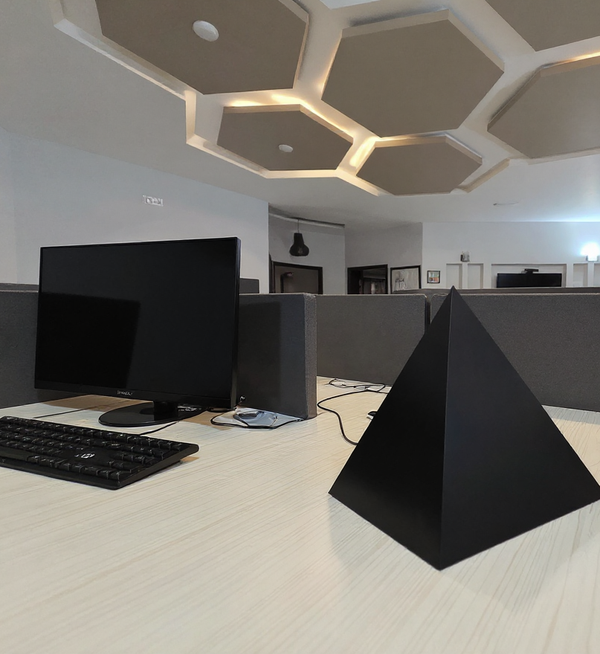The rise of the Full Stack Designer
Design the future.

Human creativity, evident since the era of cave paintings, has consistently driven advancements in design. From early sketches to digital tools shaping other tools, the evolution of UI/UX and HCI has been remarkable.
The convergence of design and technology has given rise to tools like Figma, Adobe XD, and platforms such as FlutterFlow and Webflow, transforming the way we build digital experiences. The future, marked by innovations in AI, promises a paradigm shift in sketching and design.
In this dynamic landscape, the emergence of the full stack designer reflects the evolving roles in technology and design. Who is the Full Stack Designer? What is the future of design? Let’s touch upon such questions, together.
The Evolution of Design
Humans have been designing since the early days; cave painting. It’s a core part of planning and strategizing. The ability of humans to plan and coordinate attacks is what has distinguished us from other beings, and in the future, perhaps will be the sole differentiator between us and newer beings.
In the history of computing, UI/UX or HCI has evolved from sketching, to drawing and to using digital tools themselves to design other digital tools (trippy!). For years, humans have used visualization to achieve a “vision” of what they’re building, from movies to games and to all kinds of computer programs. The term “User Experience” itself is relatively new. It was coined by Don Norman in 1993 (Nielsen Norman Group, 2017).
Using digital tools to build other tools is not a new idea. Since even before the millenia, UML, codegens, and tool-builders like Eclipse have been blurring the lines between what is a “sketch” and what is real implementation. Today, we see more refined versions of such tools. Prototyping tools like Figma and Adobe XD are allowing designers to create functional prototypes, and plugins like Figma → Code AI are making it possible to generate entire screens with just a few commands. Additionally, platforms like FlutterFlow and Webflow are making it easier than ever to visually build websites and apps.
All this is about to change. Back in 2016, Google’s early stage text-to-sketch demo, named “Quick, Draw!”, showed us how the concept of sketching may be revolutionized, replacing your sketches with real-life drawings. Today, in 2023, we see Gemini, which boasts exceptional cognitive understanding of visual scenarios. We also see Figma taking huge strides in reducing handover with their Dev Mode, with interesting AI-based features which bridge the gap between engineering and design.
As we evolve AI and the tooling around it, we may see humans honing in on their strengths (their brains) than their weakness (their bodies), which was one the sole differentiator between us and other animals. We may become more of "orchestrators", and the planners of the future, while AI and robots are the executors.
The Full Stack Designer of Today
Below are some schools of thought about who the Full Stack Product Designer is (Pixso, 2023):
- A person with a wide range of skills who can handle all aspects of software development unilaterally.
- A web designer who knows his way around coding and can develop the designs they have designed.
- A designer that is well-versed in the technical aspects of a product and can take it from idea to prototype on his own.
- A professional that’s highly skilled in strategic planning, user analysis, interface design, and visual design.
- A technical professional who can take a product end-to-end, understand complex Business Requirement Documents, decide which features should be built, communicate with all the stakeholders from engineering to clients, handle high fidelity designs, and help QA.
There are many definitions of the Full Stack Product Designer and they are all right in their own context! The kind of a Full Stack Product Designer you need completely depends on what your company team needs.
In her blog “What does it mean to be a “full stack” designer? Is it worth the effort?” Chung calls a remarkable multitalented designer, a Unicorn 🦄. Below is an illustration from that blog post showing the overlapping skills of a unicorn designer:

The next few years…
The standard UI designer, up until now, branches into two directions; either they become 1) an executive with a high level understanding of design or product (Chief Product Officer, Chief Design Officer), or, 2) a technical master of their craft, that is, a Senior UI Designer. The diagram below shows how these careers evolve and eventually become extremely distinct.

A recent discussion with Ouzair Hafeez, senior Product Designer at Spotify, showed us how similar career paths are followed in emerging startups and even corporates. How do we see this map out in the next 5 years?
We may see fullstack engineering mixing with fullstack design, and the gap between technical and executive eventually merging into one. Plus, depending on the type of company, the senior Product Designer and Chief Product Officer may be the same person.
Today, we see many startups lead by designers. We’ve worked with Tabish Ahmed, who has an awesome career as a Product Lead and Designer at Meta, Google and Adobe, working on a technical startup, Playroom. It seems like the ease of prototyping enables designers to directly communicate and achieve objectives with engineers, and their contributions can directly be mapped out to code.
However, we still have separate roles (so far!) for technical and design leads. As the gap between prototyping and real engineering decreases, at least for MVPs, we may see early stage startups having one person for both executive functions in design and engineering; the Chief Product Officer, and one person for both technical functions in design and engineering; the Full Stack Product Developer. A similar pattern is followed at Omni, which enables them to achieve goals with a tiny team.
AI Revolution & the future Designer?
With the rapid development of AI there has come a wave of intelligent design and development assistants. These tools are still in their early stages but with the speed they are being developed, it won’t be late till we see them being used everywhere as a basic tool.
So what does it mean for the Full Stack Product Designer of the future? They need to leverage this AI to accelerate the design and development process, utilizing tools and systems that allow them to create efficient and effective designs. They will have to get proficient in using low code tools and hardware at the very least. Soon we should be seeing unicorns leading entire projects end-to-end.
If you’re a designer today, you should be trying to get into both deeper design concepts as well as doing some end-to-end product building. Side projects really help!
Conclusion
The rapid development of technology is giving rise to a new era of Full Stack Designers. With their unique blend of technical, creative, and business skills, full stack designers play a crucial role in bridging the gap between various teams while being the think tank in the team. As technology continues to advance, design roles are becoming less pronounced, and the full stack designer is becoming an integral part of the entire product development process. The future holds exciting possibilities for full stack designers, as they continue to adapt and evolve alongside the ever-changing landscape of technology.
References
- https://pixso.net/tips/full-stack-designer/
- https://careerfoundry.com/en/blog/ux-design/what-is-a-full-stack-designer/
- https://medium.com/ux-school/what-does-it-mean-to-be-a-full-stack-designer-is-it-worth-the-effort-575b07e3a4ea
We love building new, visually-stunning and performant technology, for the future. A lot of our work is R&D-based and on experimental tech. If you're interested in working with or for Grayhat, DM or comment!
Author: Muhid Abid
Co-author: Saad Bazaz




